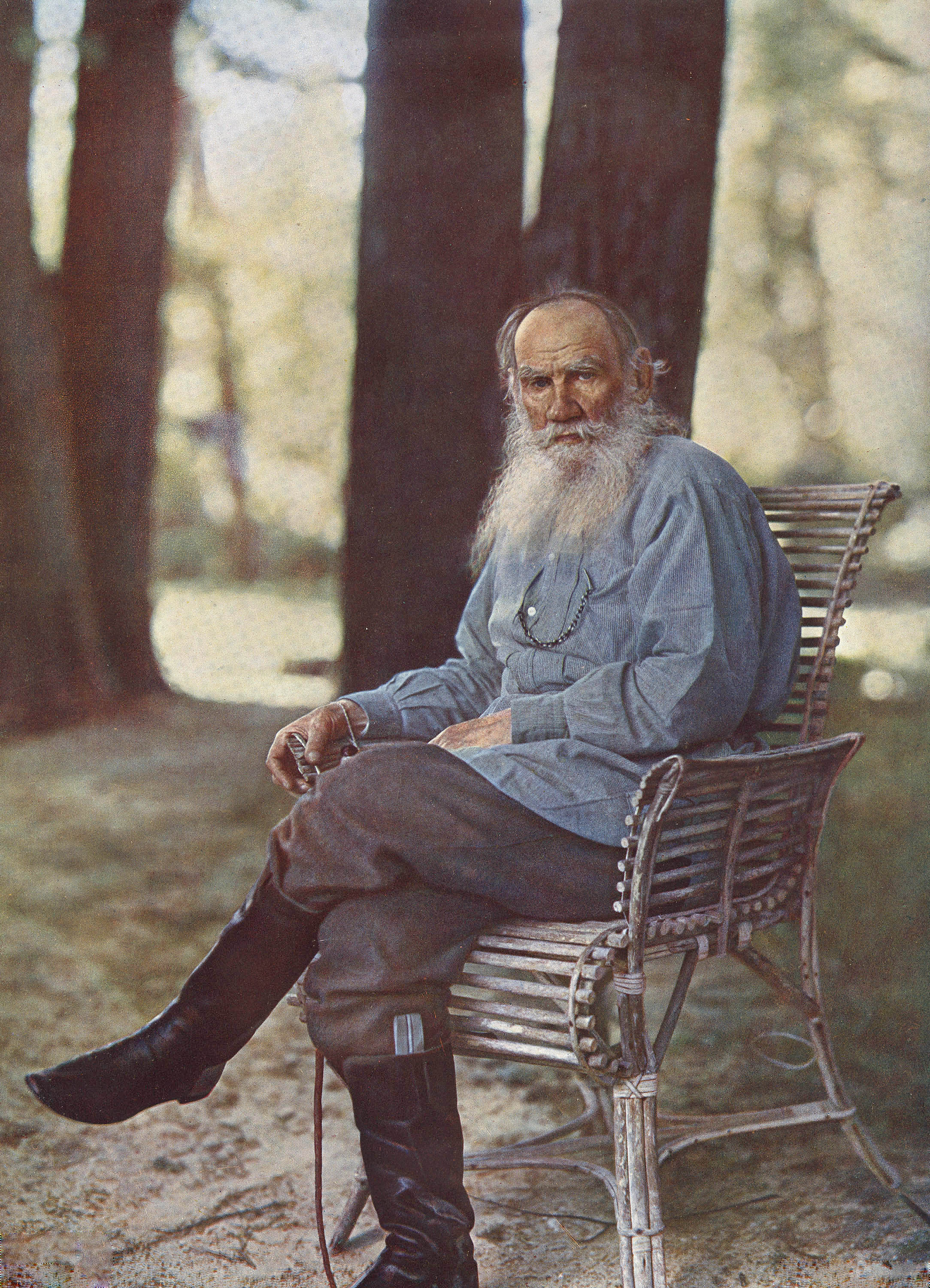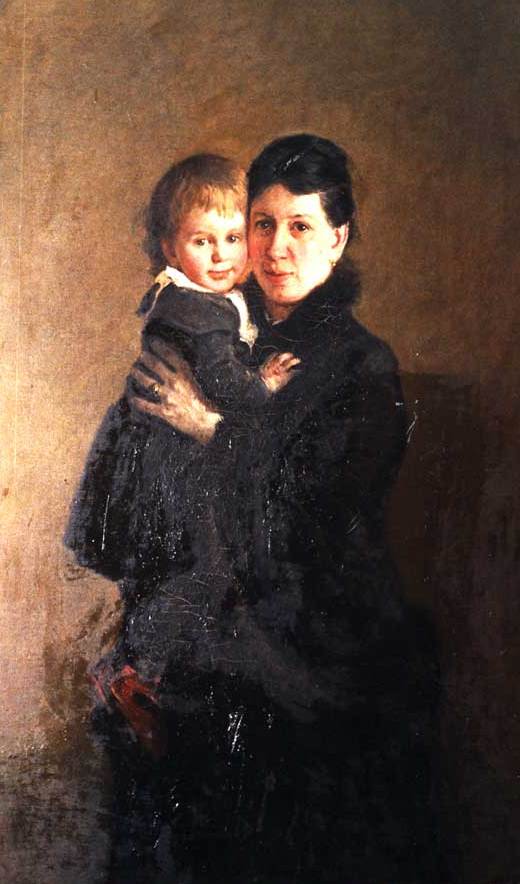|
Tolstoy
Count Lev Nikolayevich TolstoyTolstoy pronounced his first name as , which corresponds to the romanization ''Lyov''. () (; russian: link=no, Лев Николаевич Толстой,In Tolstoy's day, his name was written as in pre-reformed Russian. ; ), usually referred to in English as Leo Tolstoy, was a Russian writer who is regarded as one of the greatest authors of all time. He received nominations for the Nobel Prize in Literature every year from 1902 to 1906 and for the Nobel Peace Prize in 1901, 1902, and 1909; the fact that he never won is a major controversy. Born to an aristocratic Russian family in 1828, Tolstoy's notable works include the novels '' War and Peace'' (1869) and '' Anna Karenina'' (1878), often cited as pinnacles of realist fiction. He first achieved literary acclaim in his twenties with his semi-autobiographical trilogy, '' Childhood'', '' Boyhood'', and ''Youth'' (1852–1856), and ''Sevastopol Sketches'' (1855), based upon his experiences ... [...More Info...] [...Related Items...] OR: [Wikipedia] [Google] [Baidu] |
War And Peace
''War and Peace'' (russian: Война и мир, translit=Voyna i mir; pre-reform Russian: ; ) is a literary work by the Russian author Leo Tolstoy that mixes fictional narrative with chapters on history and philosophy. It was first published serially, then published in its entirety in 1869. It is regarded as Tolstoy's finest literary achievement and remains an internationally praised classic of world literature. The novel chronicles the French invasion of Russia and the impact of the Napoleonic era on Tsarist society through the stories of five Russian aristocratic families. Portions of an earlier version, titled ''The Year 1805'', were serialized in ''The Russian Messenger'' from 1865 to 1867 before the novel was published in its entirety in 1869.Knowles, A. V. ''Leo Tolstoy'', Routledge 1997. Tolstoy said that the best Russian literature does not conform to standards and hence hesitated to classify ''War and Peace'', saying it is "not a novel, even less is it a poem, and ... [...More Info...] [...Related Items...] OR: [Wikipedia] [Google] [Baidu] |
Yasnaya Polyana
Yasnaya Polyana ( rus, Я́сная Поля́на, p=ˈjasnəjə pɐˈlʲanə, literally: "Bright Glade") is a writer's house museum, the former home of the writer Leo Tolstoy. Bartlett, p. 25 It is southwest of Tula, Russia, and from Moscow. Tolstoy was born in the house, where he wrote both ''War and Peace'' and ''Anna Karenina''. He is buried nearby. Tolstoy called Yasnaya Polyana his "inaccessible literary stronghold". Massie, p. 308 In June 1921, the estate was nationalized and formally became his memorial museum. It was at first run by Alexandra Tolstaya, the writer's daughter. The current director of the museum is Tolstoy's great-great-grandson Vladimir Tolstoy. The museum contains Tolstoy's personal effects and movables, as well as his library of 22,000 volumes. The estate-museum contains the writer's mansion, the school he founded for peasant children, and a park where Tolstoy's unadorned grave is situated. History Early history The estate of Yasnaya Polyana wa ... [...More Info...] [...Related Items...] OR: [Wikipedia] [Google] [Baidu] |
Anna Karenina
''Anna Karenina'' ( rus, «Анна Каренина», p=ˈanːə kɐˈrʲenʲɪnə) is a novel by the Russian author Leo Tolstoy, first published in book form in 1878. Widely considered to be one of the greatest works of literature ever written, Tolstoy himself called it his first true novel. It was initially released in serial installments from 1875 to 1877, all but the last part appearing in the periodical '' The Russian Messenger.'' A complex novel in eight parts, with more than a dozen major characters, ''Anna Karenina'' is often published in more than 800 pages. It deals with themes of betrayal, faith, family, marriage, Imperial Russian society, desire, and rural vs. city life. The story centers on an extramarital affair between Anna and dashing cavalry officer Count Alexei Kirillovich Vronsky that scandalizes the social circles of Saint Petersburg and forces the young lovers to flee to Italy in a search for happiness, but after they return to Russia, their lives furth ... [...More Info...] [...Related Items...] OR: [Wikipedia] [Google] [Baidu] |
The Kingdom Of God Is Within You
''The Kingdom of God Is Within You'' ( pre-reform Russian: ; post-reform rus, Царство Божие внутри вас, Tsárstvo Bózhiye vnutrí vas) is a non-fiction book written by Leo Tolstoy. A Christian anarchist philosophical treatise, the book was first published in Germany in 1894 after being banned in his home country of Russia. It is the culmination of 30 years of Tolstoy's thinking, and lays out a new organization for society based on an interpretation of Christianity focusing on universal love. ''The Kingdom of God Is Within You'' is a key text for Tolstoyan proponents of nonviolence, of nonviolent resistance, and of the Christian anarchist movement. Background The title of the book originates from Luke 17:21. In the book, Tolstoy speaks of the principle of nonviolent resistance when confronted by violence, as taught by Jesus Christ. When Christ says to turn the other cheek, Tolstoy asserts that Christ means to abolish violence, even the defensive kin ... [...More Info...] [...Related Items...] OR: [Wikipedia] [Google] [Baidu] |
Sophia Tolstaya
Countess Sophia Andreyevna Tolstaya (née Behrs; russian: Со́фья Андре́евна Толста́я, sometimes anglicised as ''Sophia Tolstoy''; 22 August 1844 – 4 November 1919), was a Russian diarist, and the wife of Russian writer Count Leo Tolstoy. Biography Sophia Behrs was one of three daughters of a German physician Andrey Evstafievich Behrs (1808–1868) and his Russian wife Liubov Alexandrovna Islavinа (1826–1886). Her maternal great-grandfather, Count Pyotr Zavadovsky, was the first Minister of education in Russia's history. Sophia was first introduced to Leo Tolstoy in 1862 when she was 18 years old. At 34, Tolstoy was 16 years her senior. On 17 September 1862 the couple became formally engaged after Tolstoy gave Sophia a written proposal of marriage, marrying a week later in Moscow. At the time of their marriage, Leo Tolstoy was well known as a novelist after the publication of '' The Cossacks''. On the eve of their marriage, Tolstoy gave Sophia his di ... [...More Info...] [...Related Items...] OR: [Wikipedia] [Google] [Baidu] |
Resurrection (Tolstoy Novel)
''Resurrection'' ( pre-reform Russian: ; post-reform rus, Воскресение, Voskreséniye, also translated as ''The Awakening''), first published in 1899, was the last novel written by Leo Tolstoy. The book is the last of his major long fiction works published in his lifetime. Tolstoy intended the novel as a panoramic view of Russia at the end of the 19th century from the highest to the lowest levels of society and an exposition of the injustice of man-made laws and the hypocrisy of the institutionalized church. The novel also explores the economic philosophy of Georgism, of which Tolstoy had become a very strong advocate towards the end of his life, and explains the theory in detail. The publication of ''Resurrection'' led to Tolstoy's excommunication by the Holy Synod from the Russian Orthodox Church in 1901. Background The theme for the new novel had been supplied by Tolstoy's friend Anatoly Koni. He told Tolstoy the story of a man who had come to him for legal aid. As ... [...More Info...] [...Related Items...] OR: [Wikipedia] [Google] [Baidu] |
The Death Of Ivan Ilyich
''The Death of Ivan Ilyich'' (also Romanized ''Ilich, Ilych, Ilyitch''; russian: Смерть Ивана Ильича, Smert' Ivána Ilyicha), first published in 1886, is a novella by Leo Tolstoy, considered one of the masterpieces of his late fiction, written shortly after his religious conversion of the late 1870s. Considered to be one of the finest examples of a novella, ''The Death of Ivan Ilyich'' tells the story of a high-court judge in 19th-century Russia and his sufferings and death from a terminal illness. Plot Characters *Ivan Ilyich Golovin (''Ilyich'' is a patronymic, his surname is ''Golovin'') is a highly regarded official of the Court of Justice, described by Tolstoy as, "neither as cold and formal as his elder brother nor as wild as the younger, but was a happy mean between them—an intelligent, polished, lively, and agreeable man." As the story progresses, he becomes more and more introspective and emotional as he ponders the reason for his agonizing illness ... [...More Info...] [...Related Items...] OR: [Wikipedia] [Google] [Baidu] |
Boyhood (novel)
''Boyhood'' (russian: Отрочество, ''Otrochestvo'') is the second novel in Leo Tolstoy's autobiographical trilogy, following ''Childhood'' and followed by ''Youth Youth is the time of life when one is young. The word, youth, can also mean the time between childhood and adulthood ( maturity), but it can also refer to one's peak, in terms of health or the period of life known as being a young adult. Yo ...''. The novel was first published in the Russian literary journal '' Sovremennik'' in 1854. Later in life, Tolstoy expressed his unhappiness with the book. See also Leo Tolstoy bibliography External links (trans. by C.J. Hogarth) * References 1854 Russian novels Novels by Leo Tolstoy Russian autobiographical novels Works originally published in Sovremennik {{1850s-autobio-novel-stub ... [...More Info...] [...Related Items...] OR: [Wikipedia] [Google] [Baidu] |
Childhood (Tolstoy Novel)
''Childhood'' ( pre-reform Russian: ; post-reform rus, Детство, Détstvo) is the first published novel by Leo Tolstoy, released under the initials L. N. in the November 1852 issue of the popular Russian literary journal '' The Contemporary''. It is the first in a series of three novels, followed by '' Boyhood'' and ''Youth''. Published when Tolstoy was just twenty-three years old, the book was an immediate success. It earned Tolstoy notice from other Russian novelists including Ivan Turgenev Ivan Sergeyevich Turgenev (; rus, links=no, Ива́н Серге́евич Турге́невIn Turgenev's day, his name was written ., p=ɪˈvan sʲɪrˈɡʲe(j)ɪvʲɪtɕ tʊrˈɡʲenʲɪf; 9 November 1818 – 3 September 1883 (Old Style dat ..., who heralded the young Tolstoy as a major up-and-coming figure in Russian literature. ''Childhood'' explores the inner life of a young boy, Nikolenka. It is one of the books in Russian writing to explore an expressionistic style, mi ... [...More Info...] [...Related Items...] OR: [Wikipedia] [Google] [Baidu] |
Youth (Leo Tolstoy Novel)
''Youth'' (russian: Юность 'Yunost''' 1857) is the third novel in Leo Tolstoy's autobiographical trilogy, following ''Childhood'' and '' Boyhood''. It was first published in the popular Russian literary magazine ''Sovremennik''. Later in life, Tolstoy expressed his unhappiness with this book and the second in the trilogy, '' Boyhood''. See also Leo Tolstoy bibliography This is a list of works by Russian writer Leo Tolstoy (1828–1910), including his novels, novellas, short stories, fables and parables, plays, and nonfiction. Prose Fiction Novels *''War and Peace'' (Война и мир 'Voyna i mir'' 1 ... References External links * 1857 novels Russian autobiographical novels Novels by Leo Tolstoy {{1850s-autobio-novel-stub ... [...More Info...] [...Related Items...] OR: [Wikipedia] [Google] [Baidu] |
Sergey Prokudin-Gorsky
Sergey Mikhaylovich Prokudin-Gorsky ( rus, Сергей Михайлович Прокудин-Горский, p=sʲɪrˈɡʲej mʲɪxəjɫəvʲɪtɕ prəkudʲin ˈɡorskʲɪj, a=ru-Prokudin-Gorskii.ogg; – September 27, 1944) was a Russian chemist and photographer. He is best known for his pioneering work in color photography and his effort to document early 20th-century Russia.Photographer to the Tsar: Sergei Mikhailovich Prokudin-Gorskii . Retrieved 13 August 2006. Using a railroad-car darkroom provided by |
Nobel Prize Controversies
Since the first award in 1901, conferment of the Nobel Prize has occasionally engendered criticismNobel population 1901–50: anatomy of a scientific elite 5 November 2001. physicsworld.com. Retrieved 20 March 2011. and controversy. After his death in 1896, the will of Swedish industrialist established that an annual prize be awarded for service to humanity in the fields of , |








